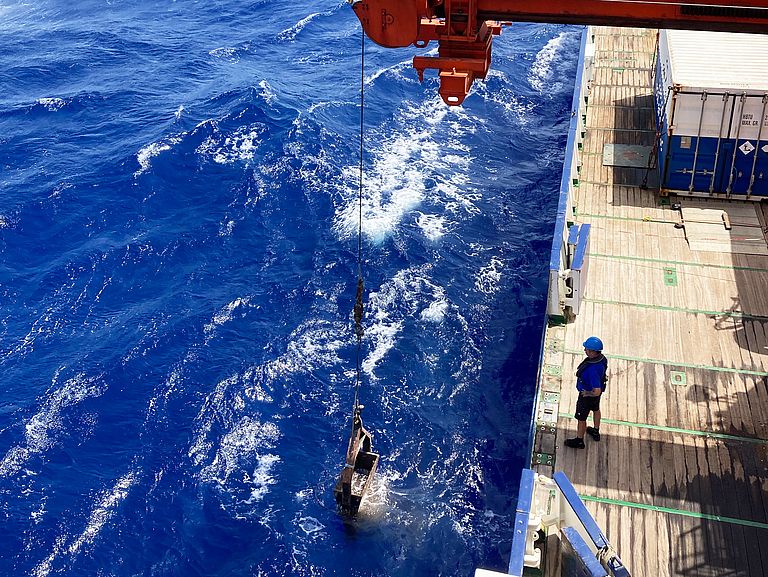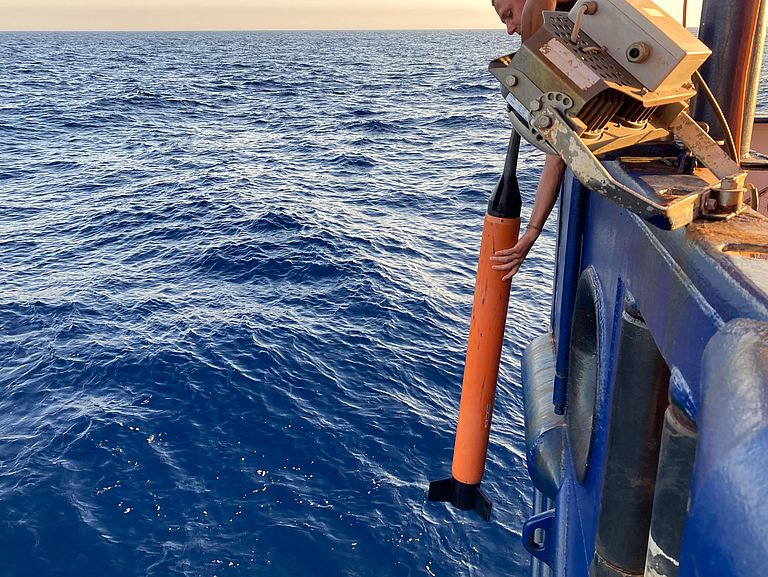SUAVE brings new discoveries in the Mediterranean Sea
International expedition revealed new volcanic structures and a ship wreck
An international team of scientists from GEOMAR Helmholtz Centre for Ocean Research Kiel, Germany, Monterey Bay Aquarium Research Institute (MBARI), United States of America, Instituto Nazionale di Oceanografia e di Geofisica Sperimentale (OGS), Italy, Victoria University of Wellington, New Zealand, and the Universities of Malta, Birmingham, and Oxford spent three weeks onboard the German research vessel METEOR exploring the seafloor of the Mediterranean in the Sicilian Channel.
A multibeam echosounder and a magnetometer were used during the METEOR M191 expedition (Submarine volcanism in the western Sicilian Channel, SUAVE) to map volcanic structures both exposed and buried in the sediment. The investigations revealed three volcanic centres that were at least six kilometres wide and 150 metres high – which makes them far larger than previously thought.
The discovery of these volcanoes add to the complex picture of volcanism related to crustal extension in the region. It includes several smaller cones that last erupted in 1831 at Graham Bank, located about halfway between Sicily and Pantelleria Island. This shoal volcanic edifice is well known to local fishermen and rises up to 9 metres below sea level. Here the most recent eruption in the working area of the expedition took place: In July 1831, a volcanic outburst produced a short-lived island called Ferdinandea that was washed away by wave erosion a few months thereafter. According to historical records, such emergence and disappearance occurred four times at this site since 300 years before Christ. During the few months of its last appearance, four countries – the United Kingdom, Italy, France and Spain – claimed the new island and disputed over its sovereignty.
During the recent expedition, lava samples were collected from the seafloor from the new and from several previously known submarine volcanoes, many of which have never been sampled before. As part of the post-cruise studies, the samples will be analysed using a suite of laboratory techniques that provide indications of the age of the volcanoes and the source of the magma feeding them. This information will be crucial to reconstruct the geological history of one of the most complex regions in the Mediterranean Sea.
“I think it is impressive that we are still discovering unknown geological features in European waters. It shows how poorly understood our seafloor still is”, says Dr. Aaron Micallef from Monterey Bay Aquarium Research Institute, co-chief scientist of the expedition. “Although it was challenging to identify submarine volcanoes in a terrain primarily made up of limestone, this expedition has improved our understanding for regional geodynamics and for the mitigation of natural hazards in the central Mediterranean Sea, especially with respect to seafloor infrastructure.”
Another surprise was the discovery of a 100 metres long and 17 metres wide ship wreck on the seafloor at 110 metres water depth by high-resolution mapping on the so-called Nameless Bank located roughly half-way between the Italian island of Linosa and Sicily. The wreck’s position was reported to the Italian authorities. Dr. Jörg Geldmacher, marine geologist at GEOMAR and chief scientist of the expedition says: “This surprising discovery is interesting, but as a geochemist, I am more excited about the excellent igneous rock samples that we managed to retrieve from the volcanic centres. It, however, demonstrates the amazing resolution of our investigation methods.”

On their expedition with research vessel METEOR, scientists collected lava samples from the bottom of the Mediterranean Sea. Photo: Jörg Geldmacher, GEOMAR

Recovery of a magnetometer during the METEOR expedition SUAVE in the Mediterranean Sea. Photo: Jörg Geldmacher, GEOMAR


